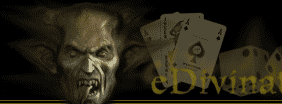 |
|||||||||||||||||||||||||
|
|
|
|
|||||||||||||||||||||||
|
|
|
|
|
|
|
|
|
||||||||||||||||||
|
|
|||||||||||||||||||||||||
|
|
|||||||||||||||||||||||||
|
|
|
|
|
|
|
|
|
|
|
|
|
|
|
|
|
||||||||||
|
|
|
|
|
|
|
|
|
|
|
|
|
|
|
|
|
|
|
|
|
|
|
|
|
|
|
|
|
|
|
|
|
|
|
|
|
|
|
|
|
|
|
|
|
|
|
|
|
|
|
|
|
|
|
Psychic, Occult and Mystical Definitions
|
|
A species of Palaeolithic man inhabiting Europe during the Mousterian period. It was named for the Neander Valley in Germany, near Düsseldorf, where in 1856 one of the earliest skulls was found. They occupied parts of Europe and the Middle East from 100,000 years ago until about 35,000 to 40,000 years ago, when they disappeared from the fossil record.
The most significant feature of Neanderthal anatomy, as with all others hominids, is the skull. Specimens vary, but typical features include a wide, vaulted cranium, heavy 'beetle brow' ridges above the eyes, a big jaw, and large teeth. Neanderthals may have looked faintly apelike, but their brain capacity was as large as, and in some cases larger than, that of modern human beings. As a whole, Neanderthals seem to have been tough and stocky individuals. |
Neanderthal |
|
|
|
Naturopathy |
Naturopathy is a system of therapy which relies exclusively on natural remedies, such as sunlight supplemented with diet and massage, to treat the sick. |
|
Various types of beings said to exist in nature. Belief in the existence of
nature spirits is common to all cultures throughout history. They are usually
attached to a specific place, such as a tree, river, plant or mountain. They
come in a variety of shapes and temperaments. Some are described as human in
form, others are like animals or are half-human, half animal; some are helpful,
others deceitful or malevolent. They are normally invisible to humans, except
to those with the gift of clairvoyance.
Elementals are a sub-class of nature spirits that are a part of the life force of all things in nature. They are ruled by archangels and are generally regarded as benevolent. The Neoplatonic Greeks categorized elementals according to the four elements: Earth elementals are gnomes; air elementals are sylphs; Water elementals are undines; and Fire elementals are salamanders. In the Middle Ages interest in these main groups was revived and alchemists and magicians sought to control and manipulate the forces of nature and the universe. Other elementals include elves, who live in the woods, and household spirits such as brownies, goblins and bogies. Fairies are also sometimes included in this category. |
Nature Spirits |
|
|
|
Necromancy |
Also known as Nagomancy, it is a form of divination by communication with the dead, one of the claimed black arts practiced by witches and magicians. The classic case of necromancy is the witch of Endor, described in the Bible (1 Samuel 28), who summoned the spirit of Samuel in the presence of Saul. This biblical episode was widely accepted as irrefutable evidence for the existence of witchcraft.
Necromancy (from Greek words meaning ‘dead' and 'divination'), a word corrupted by medieval Latin writers into nigromantia, can be divided into two main branches: divination by means of ghosts, and divination from corpses, both of which represent related forms of forbidden knowledge. The second method led to the disinterment of corpses and rifling of graves for the grisly charms which magicians and witches considered necessary for the effective performance of the magical arts. To evoke the dead the magician needed to obtain the help of powerful spirits, both for his own protection and to compel the corpse or ghost to submit to his will. A spell from ancient Greece calls upon the powers of the mighty Kore, Persephone, Ereshkigal, Adonis, Hermes and Thoth, to bind the dead. According to a ritual described by Seneca, the Roman dramatist, the summoning of the dead involved not only a burnt sacrifice but a blood-drenched altar. |
|
|
|
|
|
|
|
|
|
|
|
|
|
|
|
|
|
|
|
|
|
|
|
|
|
|
|
|
|
|
|
|
|
|
||||||||||||||||||||||||||
|
|
||||||||||||||||||||||||||